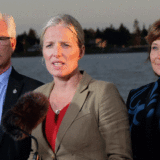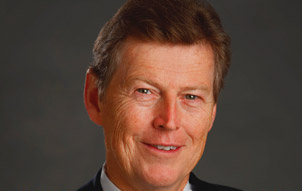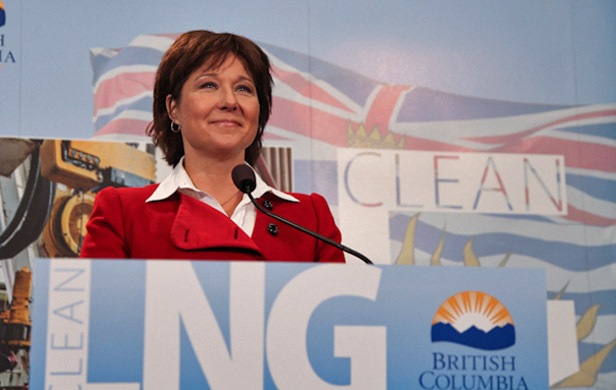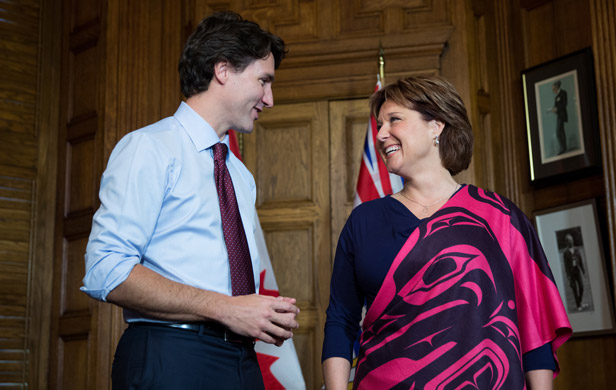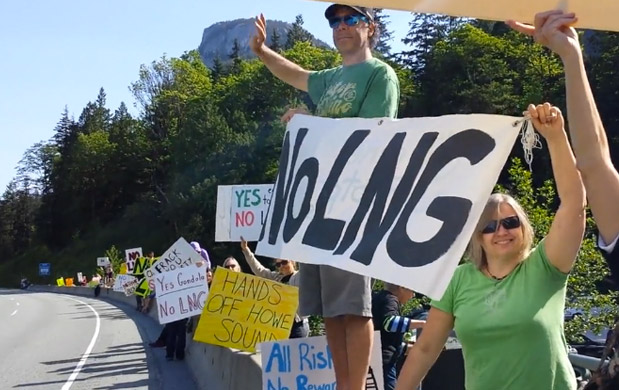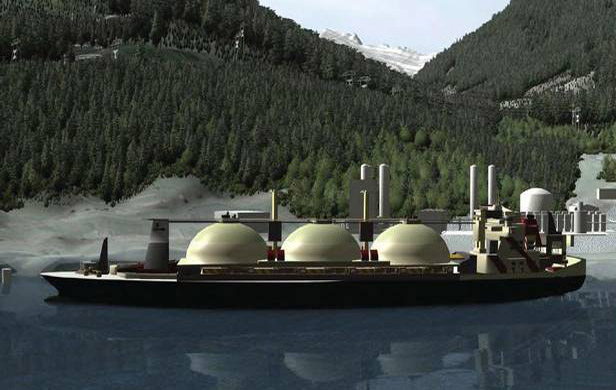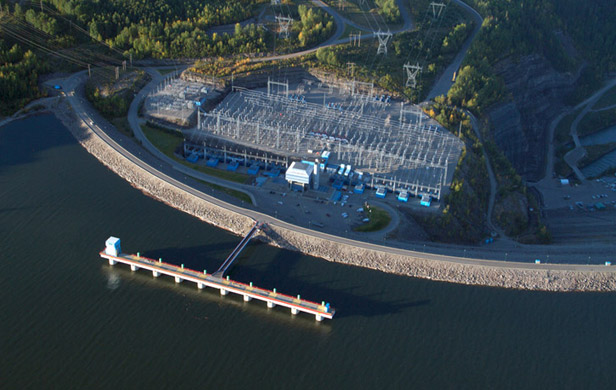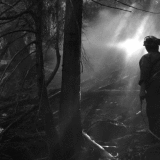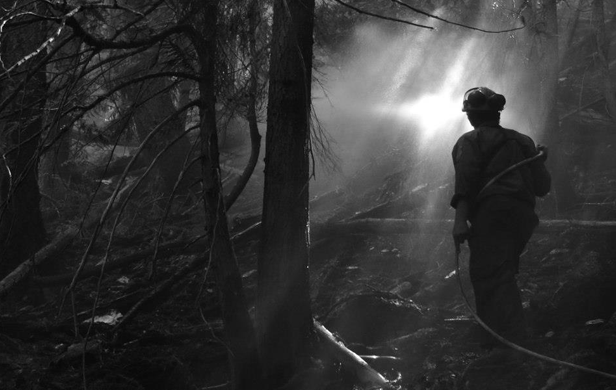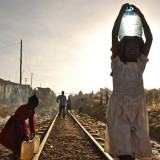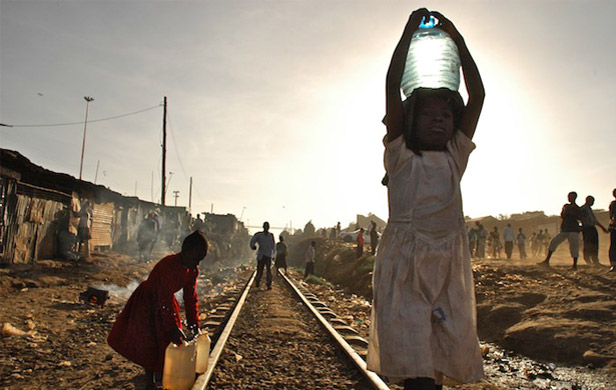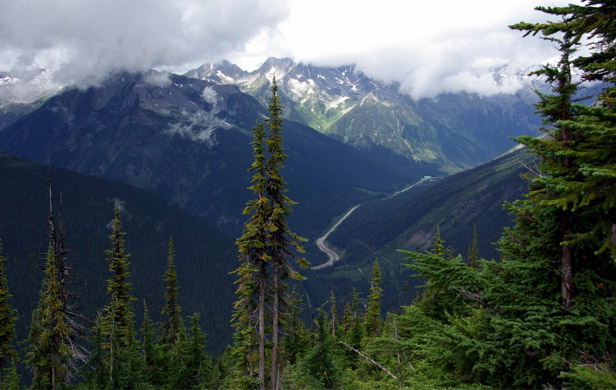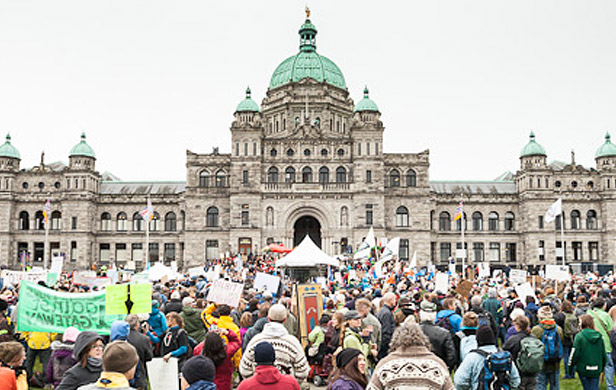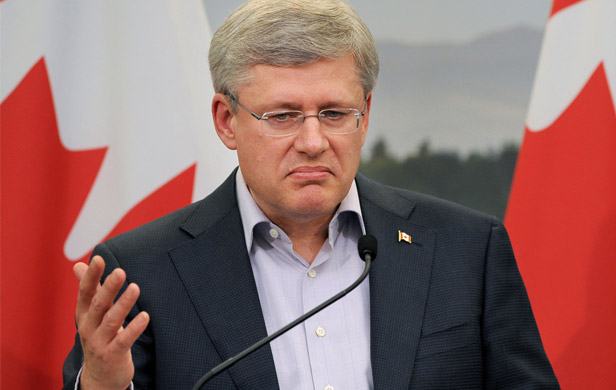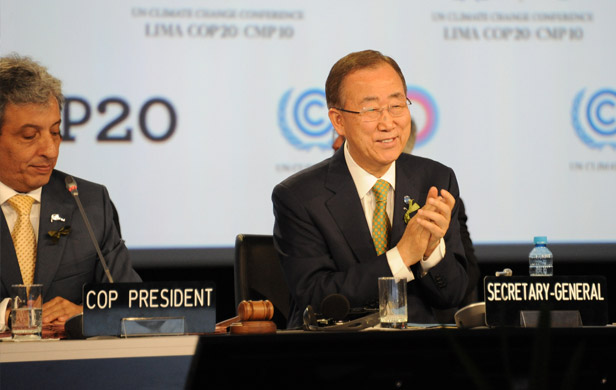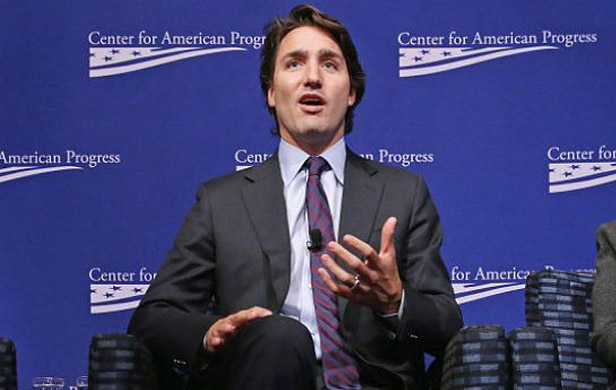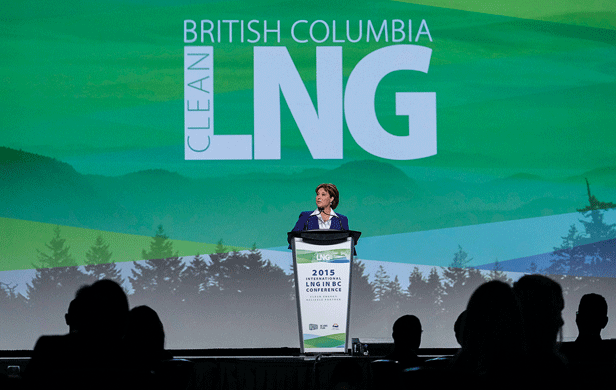
We have all been screwed, blued and tattooed in the riding of West Vancouver-Sea-to-Sky, and let me tell you how this affects every British Columbian in every region of the province.
Just as Kinder Morgan would use the Salish Sea as the sewage disposal and latrine for Tar Sands bitumen; just as the Pacific NorthWest LNG proposal for an export terminal on Lelu Island would kill BC fish; just as all proposed LNG plants in BC are ecological disgraces, Woodfibre LNG is in clear violation of Canada’s agreement on Climate in Paris in November, 2015. I’ll speak of other problems with Woodfibre LNG in a moment.
Christy’s LNG lies
Christy Clark, who seems pathologically incapable of telling the truth, constantly trills the mantra “the greatest single step British Columbia can take to fight climate change” is to export LNG. This excessive verbal crap is so typical of this woman as you will see in this quote from a well known and mighty respected geologist and shale gas expert, David Hughes in an interview with the Squamish Chief last year. Dr. Hughes was asked this, point blank question:
[quote]Q: One argument is we are not being fair to the people in China who are suffering from coal production and that liquefied natural gas from here will save them from that. [/quote]
Here was his answer:
[quote]A: “On a full-cycle emissions basis, the planet would be better off if China built state-of-the-art coal plants rather than burning B.C. LNG for at least the next 50 years. It is true that at the burner tip gas produces about half the CO2 of coal. But you have to consider full cycle emissions from the wellhead to the burner tip for gas. The hydraulic fracturing process and the supply chain – pipelines, processing plants – emit considerable amounts of methane, which is 73 times as potent as CO2 on a 20-year timeframe and 25 times as potent on a 100-year time frame (because methane leaves the atmosphere more quickly than CO2). Plus, about 20 per cent of the gas must be burned to provide power for the liquefaction and shipping process. [emphasis mine -RM]
If you compare full-cycle emissions from B.C. LNG burned in China to a state-of-the-art Chinese coal plant, which runs at 46 per cent efficiency (compared to 33 per cent efficiency for an old coal plant), B.C. LNG is 27 per cent worse than burning coal over a 20-year timeframe and seven per cent better on a 100-year timeframe. So, you’d need to wait more than 50 years until you break even, while suffering from the effects of increased greenhouse gases in the meantime.[/quote]
Christy Clark, I should explain, has a rule: never read on once the word “however” appears.
Trudeau’s no better
If, like me, you have wondered why Trudeau has steadily and, one might say, violently swerved away from the commitments Canada made re: Climate change at Paris in 2015, here is a multiple choice: 1. Sunspots; 2. A mickey slipped into his ginger ale; 3. It was in French, an alien tongue; 4. The oil industry had him by the balls and started to squeeze.
This story of April 21 last in the National Observer may be used to help you answer:
[quote]The Trudeau government and the oil patch are in agreement: Canada needs to delay plans to reduce the heat-trapping pollution that causes climate change because those actions will cost too much.
It’s a stunning retreat from key promises and statements made by the government since its election in 2015. And it has left some environmentalists wondering whether Prime Minister Justin Trudeau is following the Trump administration’s race to the bottom on climate policy.
Environment Minister Catherine McKenna confirmed the news on Thursday during a conference call with reporters. She said that Canada would introduce plans that would delay tackling emissions of methane — a powerful heat-trapping gas — from the oil patch by two years, the CBC reported.[/quote]
Compare this with an earlier story by the National Observer noting:
• The amount of carbon dioxide (CO2) in the atmosphere continues to accelerate upwards despite global efforts
• The last two years had “unprecedented” increases
• Canadian CO2 extraction is playing an oversized role
The primary driver of global warming, disruptive climate changes and ocean acidification is the ever-increasing amount of carbon dioxide in our atmosphere.
In the pocket of the oil lobby
The plain fact, shorn of the political double talk and statements of lofty motives is this: The Canadian Association of Petroleum Producers (CAPP), who control the Postmedia newspapers with their notorious “mutual masturbation” agreement, needs only to whisper “jump” and Trudeau and Clark, in perfect harmony, cry back “how high, sir, and when?”
You may believe BC’s Premier Prevaricator, Christy Clark, that Woodfibre LNG is all about BC just trying to help China and the world solve climate change difficulties, but as the Duke of Wellington, at the height of his fame, said to the man who hailed him as “Mr. Robinson, I believe”, “Sir, if you believe that, you’ll believe anything”.
Howe Sound too dangerous for LNG tankers: leading scientist
Howe Sound is British Columbia’s most southern fjord and one of its justly famed beauty spots. Once polluted by a Squamish pulp mill and Britannia Mines, the treasures of my boyhood – the whales, salmon runs, the seals, sea lions, dolphins and porpoises had mostly left. The sea flora and shellfish were disappearing. It looked as if Howe Sound had lost much of its distinctiveness forever.
But ordinary people joined government with hard work and their own money and we know what happened! The herring returned and the salmon runs with them. Killer whales, humpback whales, seals, sea lions, dolphins and porpoises returned. Divers told of rejuvenated plants and the revived shellfish populations.
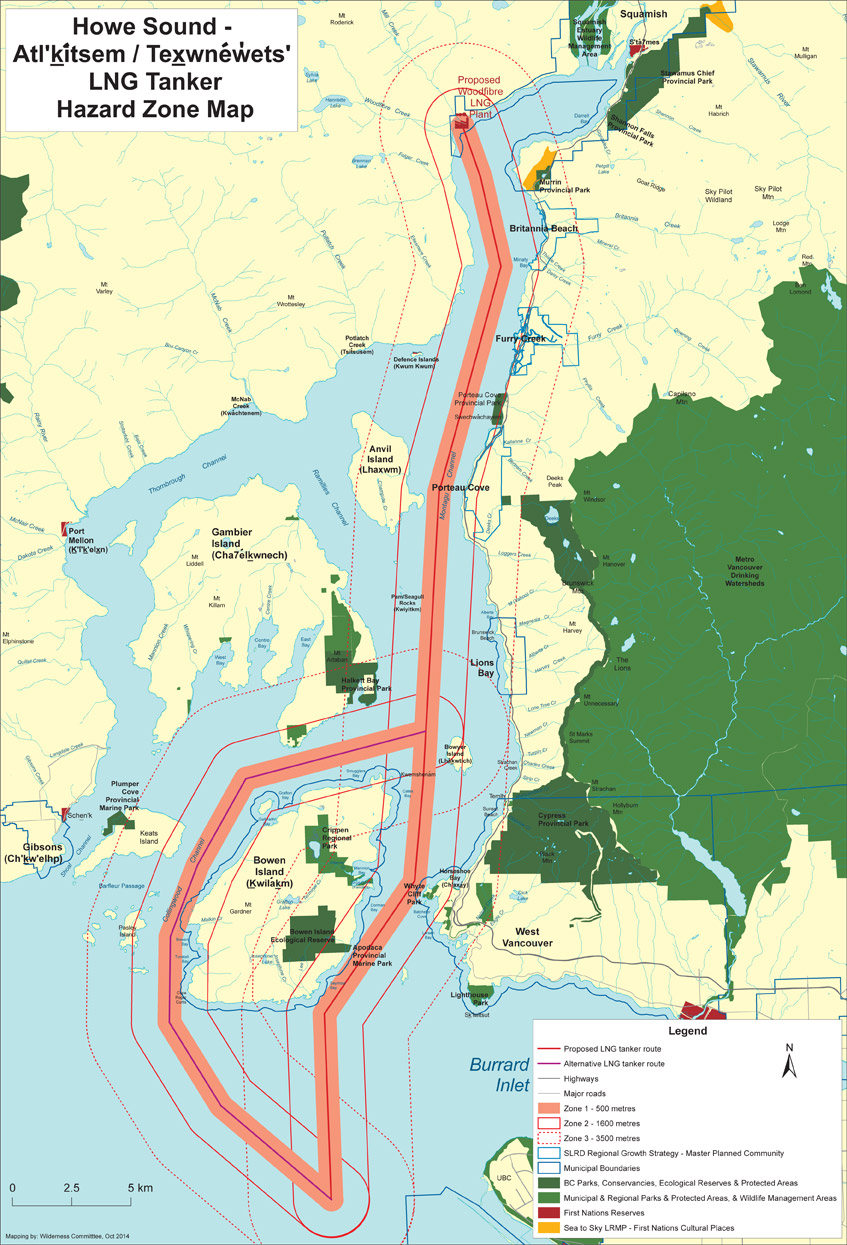
Before May 9, I and others will tell you more about the phoney environmental assessment which missed more than it covered. We’re left with unacceptable emissions in the atmosphere and ground level, hot, polluted emissions into the Sound into the habitat of the recovered sea life and dangerous LNG tankers which will be ever-increasing. And guess what folks? Howe Sound is too narrow for LNG tankers! And who says so is pretty interesting.
The leading global expert, Dr. Michael Hightower, of world-renowned Sandia Laboratories of New Mexico, the United States government and – get this – the tanker industry’s own professional organization, The Society of International Gas Tanker and Terminal Operators (SIGTTO). They all say too narrow and disagreeing with them are Sukanto Tanoto, the Indonesian jungle burner, bully landlord and convicted crook who owns WFLNG, Justin Trudeau, Christy Clark, John Horgan and to round out that gathering of experts, the Canadian Association of Petroleum Producers.
And how are we all being screwed, blued and tattooed?
Both parties with a chance of forming a government favour WFLNG and while Dr. Weaver, leader of the Greens, has spoken critically about WFLNG, worry beads are being fingered at the possibility of the Greens, holding a balance of power, might join Christy in coalition with WFLNG approval being a bargaining chip.
With uncertainty about Greens prevalent at the moment, that leaves an unknown Independent – a chap named Tristan Andrew Galbraith who owns “Critter Get Ritter,” a pest-control service in Whistler…and, who knows, a pest control expert may be just what voters will be looking for.
You’ll know more about him I suspect in the days to come.


